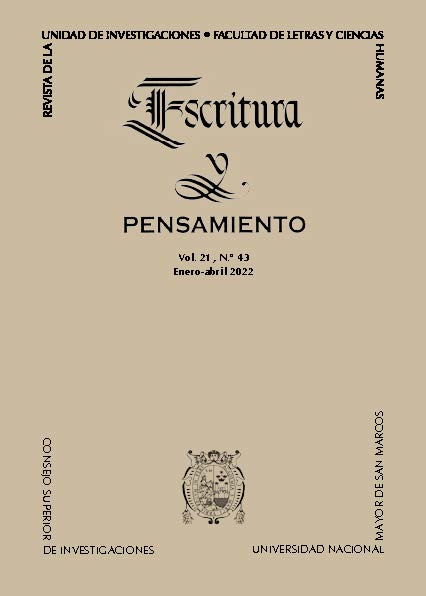Electronic government in Peru: Evaluation of services
DOI:
https://doi.org/10.15381/escrypensam.v21i43.22792Keywords:
electronic government, public administration, evaluation of public servicesAbstract
In 2020, many countries decreed social immobilization due to the COVID-19 or coronavirus pandemic and highlighted the need for an electronic government that would allow citizens to use government services online without difficulty, this objective was very hard to reach. Innovation and technology transfer have not been enough for the sustainability of an electronic government in Latin American countries; the pandemic showed the weakness in the functioning of the State; there are no protocols for analyzing data and information to aid decision-making in difficult situations. A critical element in the provision of government services are online platforms based on the development of web portals that meet the needs of citizens. To achieve this task, it is necessary to evaluate web portals, identify dimensions to establish measurements of the quality of services, essential criteria to strengthen an electronic government (e-government) in times of crisis. The e-GovQual quality model is conceptualized and proposed to determine the efficiency of the Peruvian public administration portals and a scale of various elements is presented to measure the quality of the portals based on the perception of citizens; takes as a reference four dimensions (reliability, efficiency, citizen support and trust) and 21 criteria (questions) whose purpose is to make a useful diagnosis of web portals and a validated scale can be used to measure and improve the provision of government services.
References
Albalushi, T.H., y Ali, S. (2015). Evaluation of the quality of E-government services: Quality trend analysis. International Conference on Information and Communication Technology Research (ICTRC), 26-229. https://doi.org.10.1109/ICTRC.2015.7156463
Alcaide Muñoz, L., Rodríguez Bolívar, M. P., y López Hernández, A. M. (2016). Transparency in Governments: A Meta-Analytic Review of Incentives for Digital Versus Hard-Copy Public Financial Disclosures. The American Review of Public Administration, 47 (5), 550-573. https://doi.org/10.1177/0275074016629008
Alruwaie, M., El-Haddadeh, R., y Weerakkody, V. (2020). Citizens’ continuous use of eGovernment services: The role of self-efficacy, outcome expectations and satisfaction. Government Information Quarterly, 37(3), 101485. https://doi.org/10.1016/j.giq.2020.101485
Batini, C., Viscusi, G., y Cherubini, D. (2009). GovQual: A quality drivenmethodology for E-Government project planning. Government Information Quarterly, 26 (1), 106-117. https://doi.org/10.1016/j.giq.2008.03.002
Mensah, I. K. (2019). Impact of Government Capacity and E-Government Performance on the Adoption of E-Government Services. International Journal of Public Administration, 43 (4), 1-9. https://doi.org/10.1080/01900692.2019.1628059
Wijatmoko, T. E. (2020). E-Government Service Quality Using E-GovQual Dimensions Case Study Ministry of Law and Human Rights DIY. Proceeding International Conference on Science and Engineering, 3, 213-219. https://doi.org/10.14421/icse.v3.500
Wirtz, B. W. y Daiser, P. (2015). E-Government: Strategy Process Instruments. German University of Administrative Sciences Speyer.
Xenia, P. y Gregoris, M. (2012). e-GovQual: A multiple-item scale for assessing e-government service quality. Government Information Quarterly 29 (1), 98-109. https://doi.org/10.1016/j.giq.2011.08.011
Yahuda Putra, E., y George Imanuel, P. (2020). Evaluation of Service Quality of Manado City Government Website with E-GovQual Approach to Calculate Importance Performance Analysis. 2nd International Conference on Cybernetics and Intelligent System (ICORIS). https://ieeexplore.ieee.org/document/9320842
Downloads
Published
Issue
Section
License
Copyright (c) 2022 Walter Alfonso Espinoza Olcay

This work is licensed under a Creative Commons Attribution 4.0 International License.
AUTHORS RETAIN THEIR RIGHTS:
a. The authors retain their trademark and patent rights, and also over any process or procedure described in the article.
b. The authors retain the right to share, copy, distribute, execute and publicly communicate the article published in the Escritura y Pensamiento (for example, place it in an institutional repository or publish as part a book), with acknowledgment of its initial publication by Escritura y Pensamiento.
c. Authors retain the right to make a subsequent publication of their work, to use the article or any part of it (for example: a compilation of their work, lecture notes, thesis, or for a book), provided that they indicate the source of publication (authors of the work, journal, volume, number and date).













